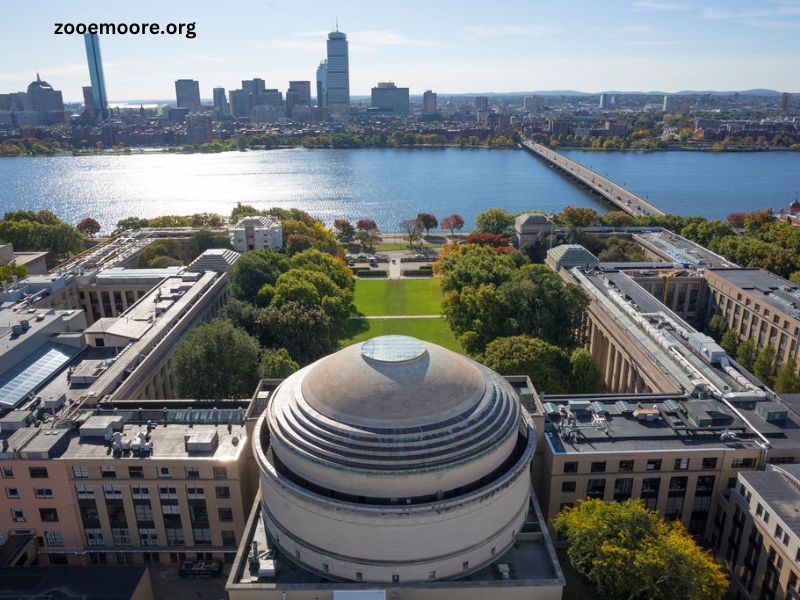The Massachusetts Institute of Technology (MIT) stands as one of the most prestigious and influential educational institutions in the world. Established in 1861 in Cambridge, Massachusetts, MIT has consistently been at the forefront of technological innovation and research. The institute is renowned for its rigorous academic programs, groundbreaking research, and a dynamic culture that fosters creativity and entrepreneurship. This article provides an in-depth look at MIT, exploring its history, academic structure, research initiatives, campus life, and its impact on society.
History and Founding
MIT was founded by William Barton Rogers, a geologist and educator who envisioned a new kind of institution that would combine scientific research with practical applications. At a time when higher education in the United States was primarily focused on classical studies, Rogers sought to create an institute that would address the needs of an industrializing society through a focus on science and technology.
The institute was officially incorporated on April 10, 1861, and its first classes began in 1865. The early years of MIT were marked by a strong emphasis on scientific research and practical engineering skills. The institute’s early curriculum was designed to provide students with both theoretical knowledge and hands-on experience, reflecting Rogers’s belief in the importance of applying scientific principles to real-world problems.
Academic Structure
MIT is organized into five schools and one college, each focusing on a distinct area of study:
- School of Architecture and Planning (SA+P): This school offers programs in architecture, urban planning, and art and design. It emphasizes a multidisciplinary approach to design and planning, integrating technology and social sciences with traditional architectural studies.
- School of Engineering: Known for its cutting-edge research and innovation, this school includes departments such as Mechanical Engineering, Electrical Engineering and Computer Science (EECS), and Civil and Environmental Engineering. It is consistently ranked among the top engineering schools in the world.
- School of Humanities, Arts, and Social Sciences (SHASS): This school covers a wide range of disciplines, including economics, political science, philosophy, and linguistics. It aims to provide students with a broad understanding of the human condition and its complexities.
- School of Management (Sloan School of Management): The Sloan School offers MBA programs, executive education, and doctoral studies. It is renowned for its focus on innovation, entrepreneurship, and leadership.
- School of Science: This school includes departments such as Physics, Chemistry, Biology, and Mathematics. It is dedicated to advancing fundamental scientific knowledge and its applications.
- College of Computing: Established more recently, this college integrates computing into all aspects of MIT’s research and education. It encompasses departments related to artificial intelligence, robotics, and data science.
Research and Innovation
MIT is synonymous with innovation and research excellence. The institute’s research efforts span a vast array of fields, from artificial intelligence and robotics to environmental science and biotechnology. MIT’s research centers and labs are hubs of cutting-edge discovery and technological advancement.
- Artificial Intelligence and Robotics: MIT’s Computer Science and Artificial Intelligence Laboratory (CSAIL) is a leader in AI research, developing technologies that have far-reaching implications for industries and everyday life. MIT’s Robotics Lab focuses on creating robots that can perform complex tasks and interact with humans in sophisticated ways.
- Biotechnology and Health Sciences: The Koch Institute for Integrative Cancer Research at MIT combines biology, engineering, and medicine to develop new cancer treatments and diagnostic tools. Similarly, the Broad Institute, a collaboration with Harvard University, is a pioneer in genomics and biomedical research.
- Energy and Environment: MIT’s Energy Initiative (MITEI) addresses global energy challenges through research and partnerships with industry and government. The institute’s work in renewable energy, energy storage, and sustainable development is crucial in tackling climate change.
- Space Exploration: MIT has a long history of involvement in space exploration, from sending experiments on NASA missions to developing technologies for space travel. The Space Systems Laboratory at MIT focuses on advanced space technologies and satellite systems.
Campus Life
MIT’s campus in Cambridge, Massachusetts, is a vibrant and dynamic environment where students and faculty engage in a wide range of academic, cultural, and social activities. The campus features iconic landmarks such as the Great Dome, the Stata Center, and the Media Lab.
- Student Life: MIT students are known for their creativity and entrepreneurial spirit. The institute’s diverse student body participates in numerous extracurricular activities, including clubs, sports, and arts organizations. MIT’s emphasis on hands-on learning extends beyond the classroom, with students frequently involved in collaborative projects and startups.
- Housing and Dining: MIT offers a variety of housing options, including dormitories, co-ops, and independent living. The campus dining services provide a wide range of food choices, catering to different dietary preferences and cultural backgrounds.
- Athletics and Recreation: MIT has a strong athletic program with numerous varsity, club, and intramural sports. The institute’s facilities include gyms, swimming pools, and athletic fields. MIT’s sports teams, known as the Engineers, compete in NCAA Division III.
- Cultural and Artistic Activities: The campus is home to several cultural institutions, including the MIT Museum, which showcases the institute’s contributions to science and technology. Students and faculty also have opportunities to engage in theater, music, and visual arts through various campus organizations and events.
Global Impact
MIT’s influence extends far beyond its campus, impacting various sectors globally. The institute’s research and innovations have contributed to advancements in technology, medicine, and industry. MIT graduates, known as “MIT alumni,” are found in leadership positions around the world, driving change and progress in their respective fields.
- Entrepreneurship: MIT has a strong entrepreneurial ecosystem, with many startups and spin-offs originating from its research. The Martin Trust Center for MIT Entrepreneurship supports students and faculty in developing new ventures and technologies.
- Public Policy and Social Impact: MIT’s research and expertise inform public policy and address societal challenges. The institute’s work in areas such as education, health, and sustainability influences decision-making at local, national, and international levels.
- Global Collaborations: MIT collaborates with institutions and organizations around the world, fostering international partnerships in research and education. These collaborations address global challenges and contribute to a shared knowledge base.
Conclusion
The Massachusetts Institute of Technology is a beacon of innovation, excellence, and interdisciplinary collaboration. Its history, academic structure, and research initiatives reflect a commitment to addressing the world’s most pressing challenges through science and technology. MIT’s vibrant campus life and global impact further underscore its role as a leading institution that shapes the future of education, research, and society. As MIT continues to evolve and adapt, its contributions to knowledge and innovation will undoubtedly remain at the forefront of global advancements.



